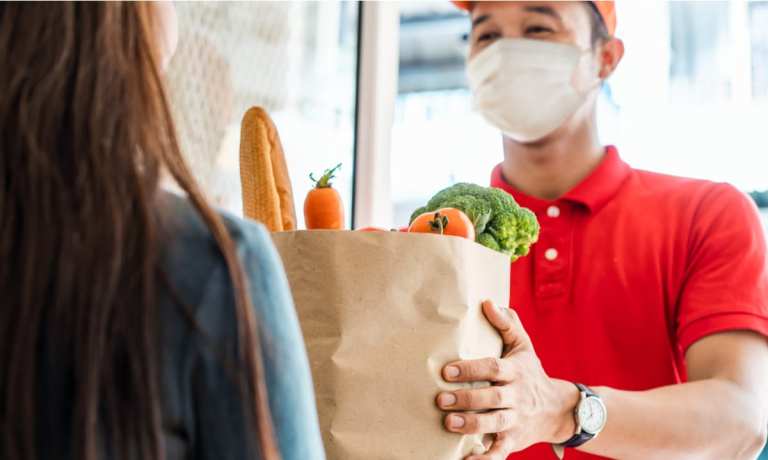Smaller Grocery Delivery Services Specialize to Stand Out Against Retail Giants

As consumers adopt digital ordering and delivery services to fulfill more and more of their routine needs, a wide range of businesses are trying their hand at grocery delivery. Amid the razor-thin margins of grocery delivery, the largest companies tend to be at a huge advantage, able to leverage their nationwide (or even international) infrastructure to gain market share, while smaller players must specialize to distinguish themselves.
On the one hand, major retailers such as Amazon, Walmart, Stop & Shop, Target and Ahold Delhaize are all pushing their expanded digital grocery capabilities. Walmart dominates by a long shot, garnering almost a fifth of the grocery segment. On the other hand, multi-national third-party delivery service Instacart accounts for more than half of the online grocery market as of June, reported Grocery Dive. In advance of the company’s public offering, it is valued at about $39 billion. On the third hand (tag in a friend if you only have two hands), restaurant delivery services such as Uber Eats and DoorDash have also entered the grocery delivery space in the last year, using their extensive networks of drivers to fulfill orders with speed unavailable to smaller companies. DoorDash, for instance, promises under-an-hour deliveries from leading supermarket chains included Wegmans, Hy-Vee, Gelson’s and more.
Smaller, local grocery delivery services cannot compete with the huge inventory or the immediacy offered by these giants, and must make a name for themselves in other ways. San Francisco-based Good Eggs, for example, which is expanding to Southern California, emphasizes the quality of its products. As the company’s CEO Bentley Hall told PYMNTS in a recent interview, “The thing that makes us probably most unique is that we are still 70 percent direct from local producers within 250 miles of here … we are not selling 60,000 SKUs of commodity goods that you can get anywhere else. We’re selling, like 5,000 really peak quality, high-integrity SKUs.”
In the same vein, smaller, more premium grocery and convenience store delivery services exist in various places throughout the United States, offering higher quality, more local ingredients than grocery delivery giants. In New York, for example, Thrive Market emphasizes the selectiveness of its health-minded inventory, saying, “We don’t claim to carry everything—but we do carry the best version of everything … Simple is better when it comes to food — fewer ingredients, transparent sourcing, honest labels.” In Chicago, Foxtrot Market, which has been expanding into other areas, sells a curated selection of groceries and everyday essentials from local vendors. Meanwhile, subscription services like Misfits Market, Imperfect Foods, and Hungry Harvest differentiate themselves from grocery delivery giants by providing fresher produce and focusing on their anti-food-waste messages.
As grocery experts predict that the future of grocery will see consumers shopping both in-store and remotely, smaller, local companies that successfully differentiate themselves have an opportunity to leverage consumers’ changing habits to build a lasting relationship in the post-pandemic future. As John Ross, president and CEO of the Independent Grocers Alliance, told Karen Webster in a recent interview, leaders of smaller grocery businesses have the opportunity to stay especially in tune with consumers’ needs. They need to think, “All of a sudden, my shoppers want something new for me. I better figure out a way to deliver it because … our relationship with the shopper is a competitive advantage versus a national chain, and so if that service expectation grows, we better figure out a way to fulfill it.”